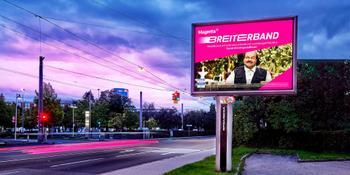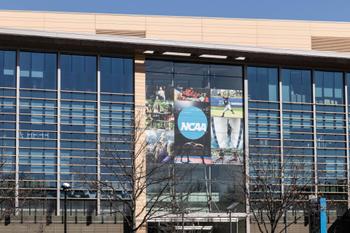In this instalment of our OOH Executive Insights series, Broadsign’s GM for Asia Pacific (APAC), Remi Roques, discusses recent challenges in the Asian OOH space, key trends that will shape OOH in the region, and the role Broadsign will take in helping Asian media owners grow outdoor advertising to the next level.
2023 is the year APAC OOH recovers and grows
The story of OOH in APAC is still greatly influenced by the pandemic. COVID had a much heavier impact in APAC than probably any other region of the world, with certain areas in China still in complete lockdown for much of 2022. This has significantly delayed the growth and maturation of the out-of-home market in the region. However, as public health guidelines continue to ease, we expect a strong recovery in 2023.
With that in mind, I would like to share some trends that will define OOH in APAC over the new year.
This will be a big year for innovation
In 2023, we will see parts of Asia catch up very quickly with some of the more advanced digital networks found in markets like Europe and North America. Already, media owners in Hong Kong and Japan are quite innovative and interested in adopting the latest technology. More OOH businesses in the rest of the region are no doubt eager to make their own moves to introduce exciting new technologies and processes to their businesses.
For just one example, we have seen a great deal of interest from buyers and sellers in delivering dynamic content, allowing for things like live display of the score of a sports game or the use of a live data feed to influence what kind of message appears onscreen. Common triggers for this kind of content include things like the time of day, current weather conditions, or the state of traffic. With advertisers demanding more audience-based targeting capabilities across all advertising channels, including DOOH, it will become increasingly important for media owners to support dynamic content as it provides highly personalized and relevant content for audiences facing a digital signage screen.
Asia has also been at the forefront of the anamorphic billboard trend, also known as 3D billboards, which have exploded in popularity over the past couple of years. With these displays, brands and agencies have the ability to push impactful campaigns that often draw strong social media exposure for their creativity. We will see more brands and agencies leverage this creative medium in the coming year, and there is a clear interest by many out-of-home media owners in the region to deploy more assets to meet the growing demand.
Audience data will improve to fuel more programmatic transactions
As it has been in recent years, programmatic remains a hot topic in APAC, but there are some challenges to be addressed to increase regional adoption. One, in particular, relates to audience data.
Asia does not have an industry body coordinating audience measurement standards across the entire region. Therefore, media owners can have a bit of a challenge in providing brands and agencies with accurate impression data, which is key to fair and effective programmatic transactions in OOH. This has created a demand from brands and agencies for increased transparency on the accuracy of audience data and impression multipliers.
For now, it’s difficult to say with certainty what the ultimate solution will be, although many of Asia’s leading media owners do seem to be partnering with innovative third-party providers to improve the quality of the data they offer their buyers. Standardization may not quite be here, but I do expect the level of quality of audience data to improve in the coming year.
Security and transparency take on greater importance
Related to transparency, we also see a demand in Australia for third-party verified proof of play data. Regardless of how accurate your reporting and proof of data may be, a growing number of brands and agencies no longer want the data to come straight from the media owner. Technology providers can address this concern by providing raw incoming data to a third-party data verification company, helping to meet this new need for external validation of proof-of-play data. The data verification company would then create the report dashboards and segregate the data accordingly for agencies.
In addition to data transparency, cyber security remains top of mind for all players in the industry. For media owners, this means ensuring that their media schedules aren’t disrupted and displays remain online in order to deliver on advertising commitments. Media owners that ensure their network is secure and reliable by leveraging software solutions that meet third-party certification standards for security will likely have a competitive advantage over others.
Broadsign in APAC in 2023
During the pandemic, when OOH businesses in APAC and the rest of the world were hurting from lockdowns, we at Broadsign ensured that our partners, and the industry in general, remained as healthy as possible, even though it meant taking on additional efforts ourselves. We don’t think our job ends at just providing OOH software.
As APAC begins to recover in 2023 and demand continues its return to pre-pandemic levels, we will help advertisers and media owners grow their demand for OOH by equipping them with the industry’s most secure and reliable OOH software to grow their programmatic capabilities and deliver targeted, highly personalized dynamic content. We will also continue to work with local technology providers and address challenges around data accuracy and transparency, and cyber security. All of this requires collaboration and a good deal of work, but we’re excited to take on the challenge with the rest of the APAC OOH community to bring our industry to new heights.






